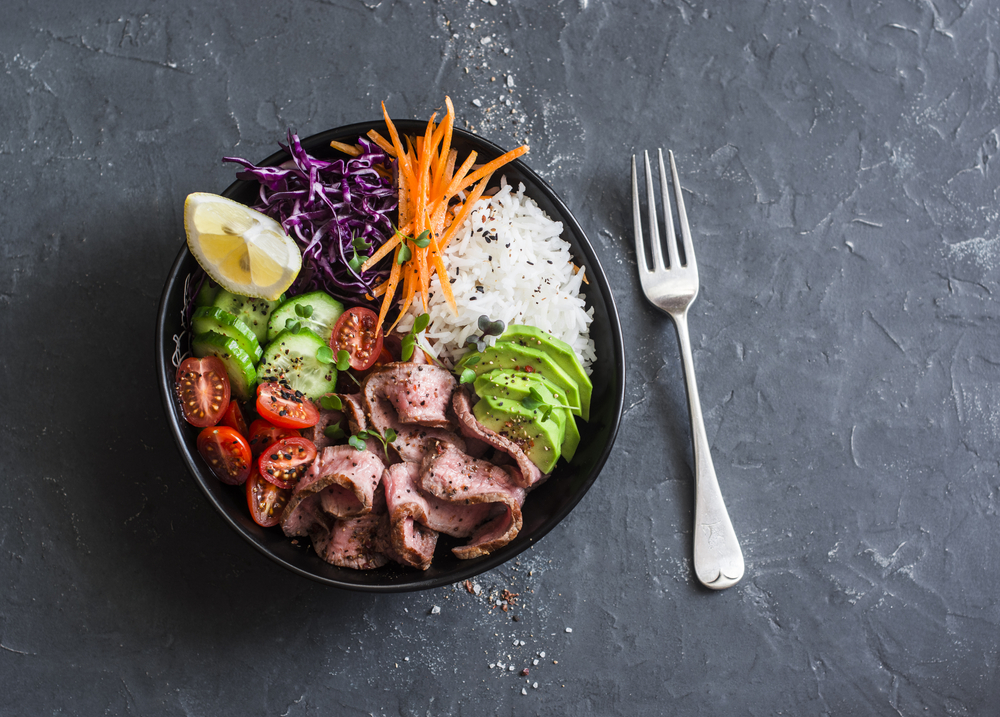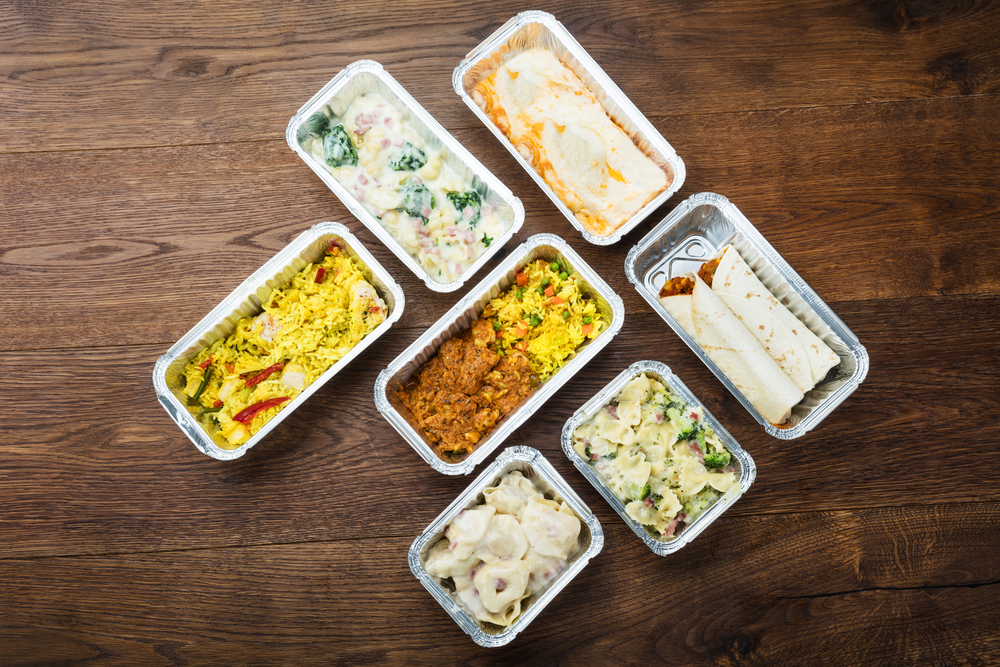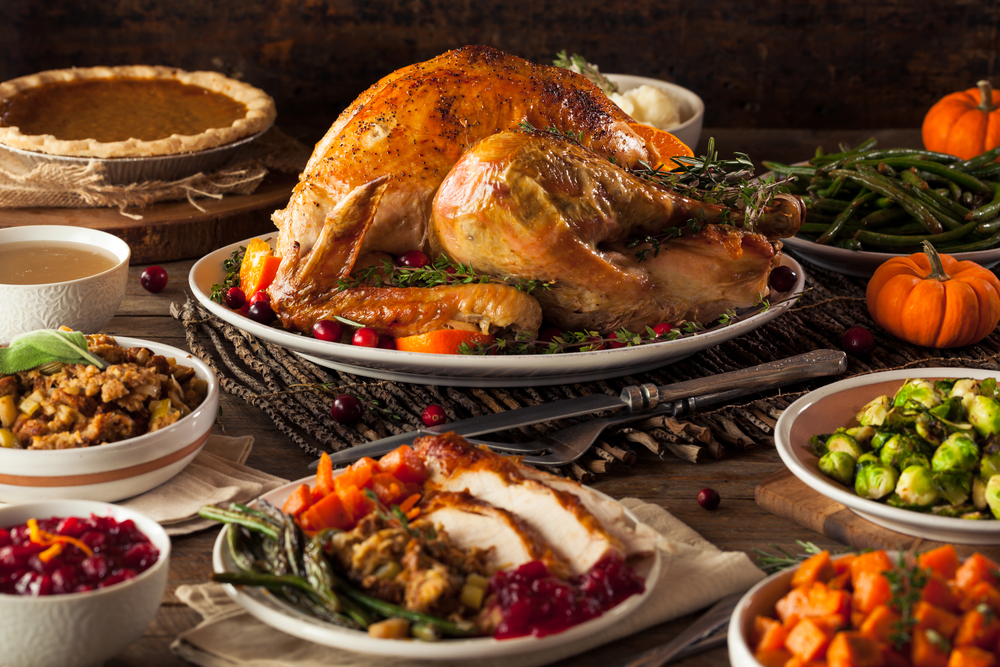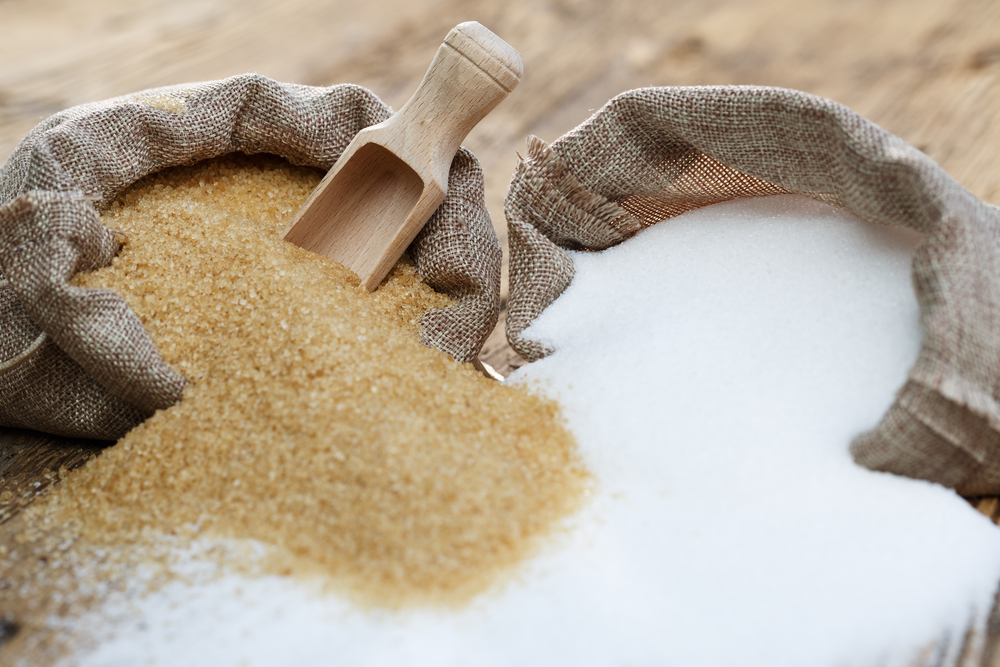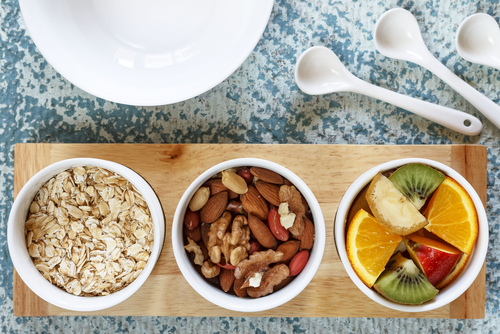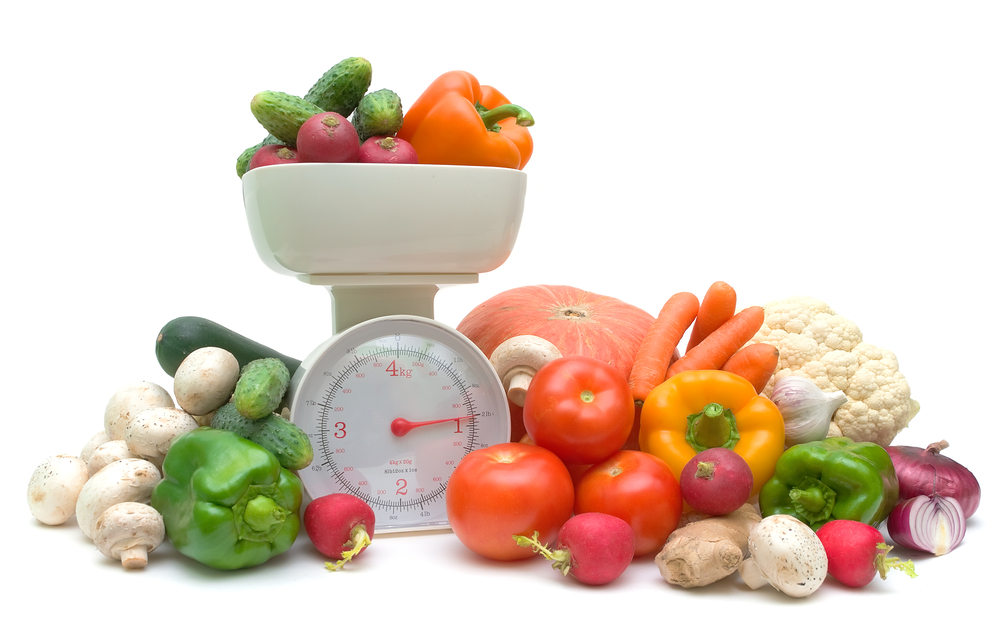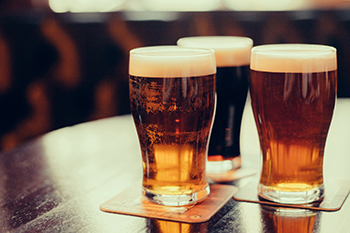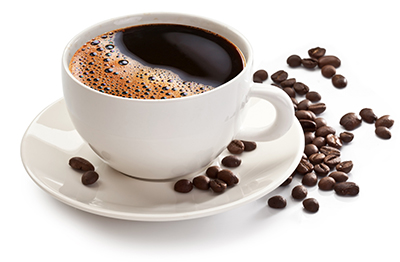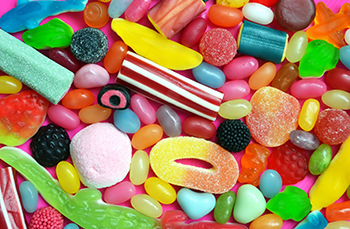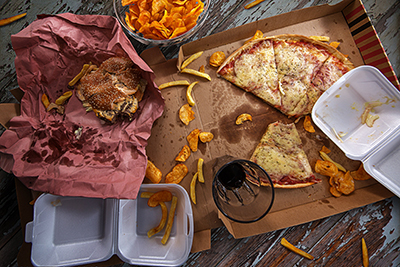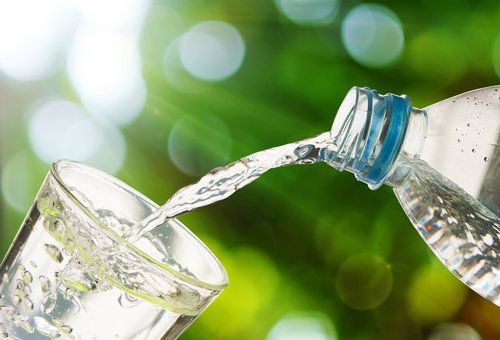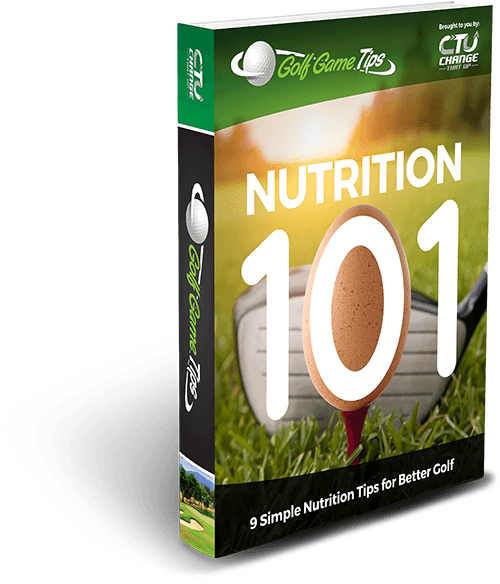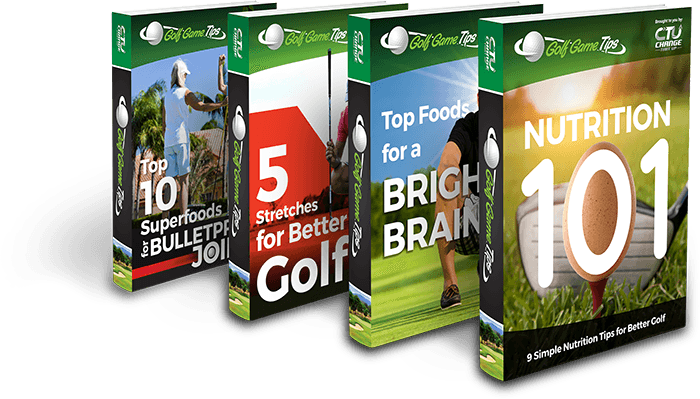emptying, helps you feel fuller longer, reduces calorie intake, and enhances weight loss.
Certain fibers also help feed the healthy bacteria in your gut, which can have a beneficial effect of your immune system, brain health, mood, appetite, and more.
All those benefits…yet, most people don’t consume nearly enough. According to the American Dietetic Association, the average American consumes a paltry 15 grams of fiber per day—about half the recommended intake. Guess what? High fiber intakes are associated with healthier body weight, better carbohydrate management, better digestive system health, better heart health, and more. Low fiber intakes, on the other hand, have been linked to excess body fat, and I’m sure you can guess the rest.
Shoot for at least 30 grams of fiber per day from a variety of colorful vegetables and fruits, legumes, nuts, seeds, and minimally processed, true whole grains.




